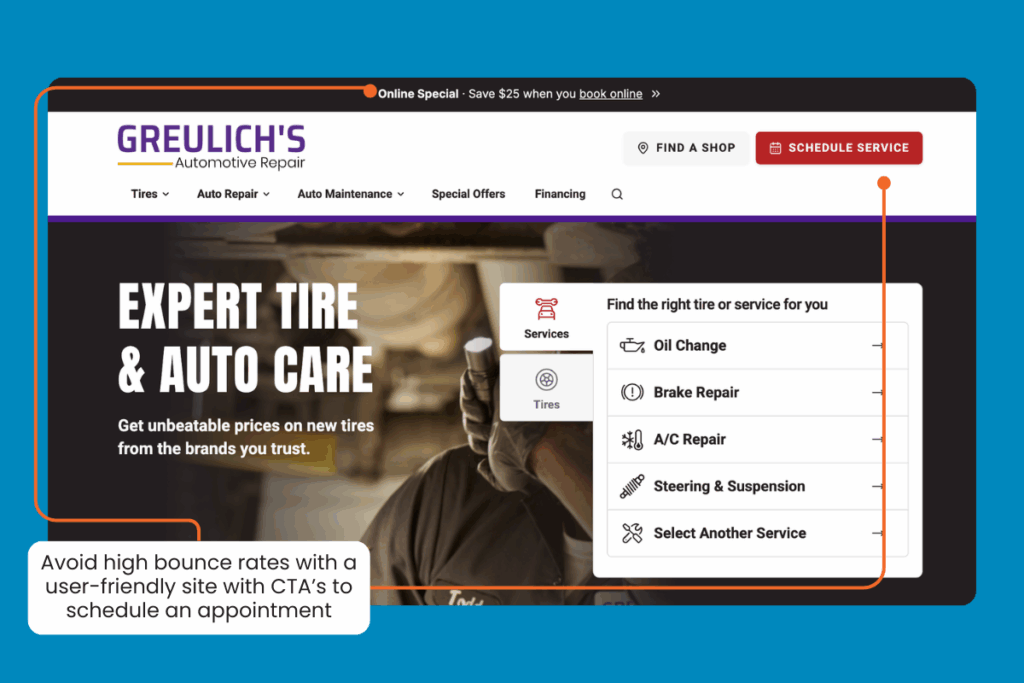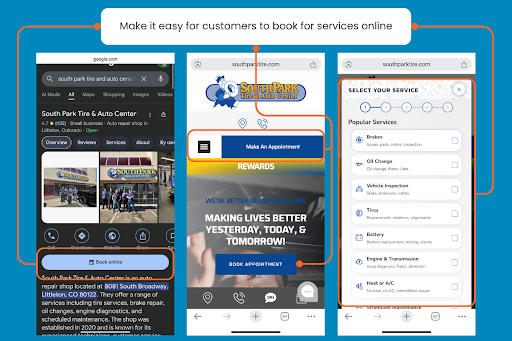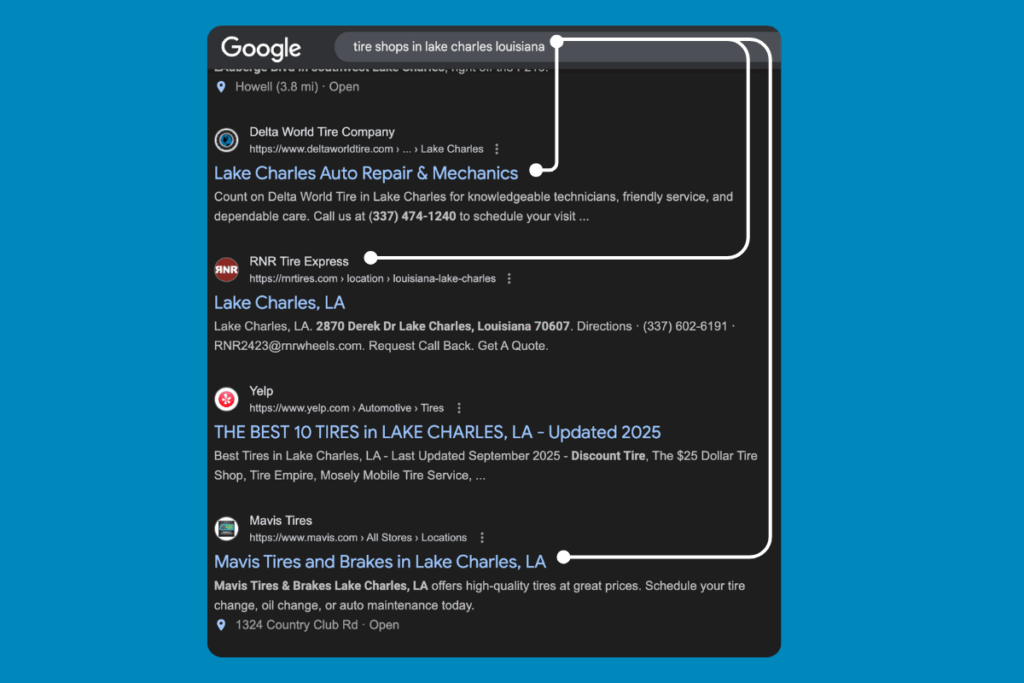Track the right Google Analytics metrics to boost your auto repair shop’s SEO and convert more visitors into customers.
Why Metrics Matter
When a car comes into your repair shop, you wouldn’t just guess what’s wrong—you’d run diagnostics. The same goes for your website. If you don’t know how your website is performing, you can’t fix it or make it work harder for your business.
That’s why tracking the right Google Analytics (GA4) metrics is critical. Instead of drowning in numbers, you just need to focus on the ones that directly impact customers finding you online and booking appointments.
In this article, we’ll break down the top Google Analytics metrics every auto repair shop should track—and what to do with them.
1. Traffic Sources
What it is: Shows how visitors find your website—through Google search, ads, referrals (like RepairPal), or direct visits.
Why it matters:
- If most customers are coming from search, your SEO is working.
- If referrals are strong, partnerships (like being RepairPal Certified) are paying off.
- If traffic is low everywhere, it’s time to boost your marketing.
Action Step:
Check your traffic sources monthly. If “Organic Search” is low, focus on Auto Repair SEO.
2. Top Pages
What it is: The most visited pages on your site.
Why it matters:
- Helps you see what customers care about most (brake repair, oil change, tire service).
- Identifies which service pages to optimize with local keywords like “brake repair in [City].”
Action Step:
Make sure your top pages have strong call-to-actions (CTAs) like “Book Your Service Today.” If a service you want to promote isn’t a top page, consider rewriting it or creating new blog content.
3. Bounce Rate
What it is: The percentage of visitors who leave after viewing just one page.
Why it matters:
- High bounce rates mean customers aren’t finding what they need.
- Google considers this a sign of poor user experience—which can hurt SEO.
Action Step:
Lower bounce rates by:
- Speeding up your site.
- Adding clear CTAs.
- Making sure titles match the content.

4. Conversion Rate
What it is: The percentage of visitors who take action—booking an appointment, calling, or filling out a form.
Why it matters:
- Traffic is useless if it doesn’t turn into paying customers.
- A strong conversion rate (5–10% for shops) means your site is working.
Action Step:
Set up GA4 to track phone clicks and online bookings. Test different CTAs like:
- “Schedule Brake Repair Now”
- “Call Us Today for a Free Estimate”
5. Mobile Performance
What it is: Tracks how your website performs for mobile users.
Why it matters:
- Most customers search on their phones.
- If your mobile site is slow or hard to use, you’ll lose leads instantly.
Action Step:
Open your site on your phone:
- Does it load quickly?
- Is the “Call Now” button easy to find?
- Can you book an appointment in a few clicks?
If not, it’s time to make updates.

6. Location Data
What it is: Shows where your visitors are located.
Why it matters:
- SEO should bring in local customers—not people 200 miles away.
- If you’re attracting traffic outside your service area, your SEO isn’t targeting correctly.
Action Step:
Include your city (and nearby towns) in your website copy. Keep your Google Business Profile up to date with accurate info.

7. Search Queries (via Google Search Console)
What it is: The keywords customers type into Google that lead them to your site.
Why it matters:
- Shows what services people are searching for.
- Highlights content gaps (if people search “engine diagnostics near me” but you don’t have a page for it, you’re missing leads).
Action Step:
Use these keywords to update service pages and write new blog posts. Example: “5 Signs You Need Engine Diagnostics in [City].”
Focus on What Matters
You don’t need to be a data analyst to use Google Analytics. By focusing on a few key metrics—traffic sources, top pages, bounce rate, conversions, mobile performance, location data, and search queries—you’ll understand how customers find you, what’s working, and where to improve.



